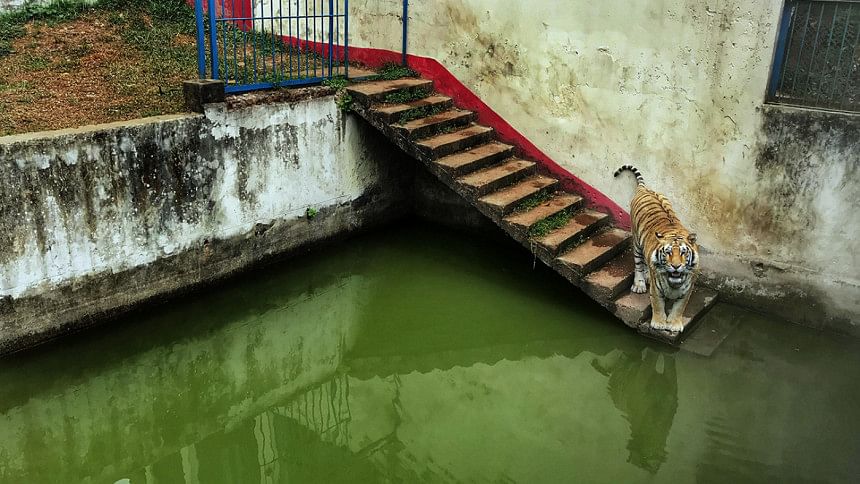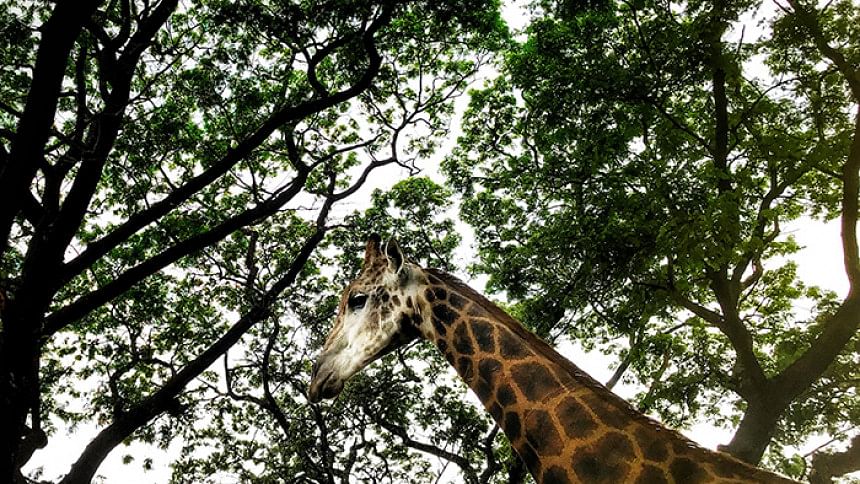(Watch) A moment of respite: Animals at Mirpur Zoo get a much-deserved break

Something strange is happening inside the Bangladesh National Zoo in Dhaka. For the first time in decades, this establishment is devoid of huge throngs of people for an extended period of time as the coronavirus pandemic has resulted in never-before-seen social distancing measures.
With no people in sight, the animals seem to be having the time of their lives (however much is possible within the confines of a cage). The curator of the National Zoo, Dr Md Nurul Islam, seems to think the same.
"They seem to be feeling happier and are moving around more. Previously, many animals would be seen crouching or sitting in one corner of the cage. They are even eating with more relish, it seems," said Dr Islam, donned in a mask, gloves and a surgical cap.
The Daily Star went into the Bangladesh National Zoo premises during the lockdown to take a look at how the animals were doing in a zoo with no visitors. The pathways were empty -- this time there was no heavy scent of human smell or perfume; no sound of vuvuzelas, no child's screams could be heard, neither the clacking of shoes on the gravel path. Even though they were still stuck inside cages, it looked as though the animals got a moment to breathe -- without having to entertain humans, without being pelted with nuts and other food scraps.

The deer moved in harmonious glory, within the little space they shared. They ate the watermelons given to them by one of the few caretakers who has been working at the premises during the shutdown.
Even the majestic tiger, which is often prodded and poked by visitors to move from its sedentary position, was seen walking on the little grass plot, napping and snoozing by the small waterbody, before retiring to its bed inside the cage.

Zoo authorities have made a roster to maintain the workforce needed to care for the animals. Every day, kilogrammes of meat, sugarcane, apples, cucumbers and grains are prepped in the early hours for the residents of the zoo.
"There is a change in their eating habits as well. The animals do not waste as much food any more. They eat at regular intervals and some of the herbivores graze on the trees and grass inside their enclosures," said Nurul Islam.

As the shutdown to contain the spread of the novel coronavirus continues -- for nearly two months now -- the zoo authorities are getting a glimpse of how the animals behave in the absence of constant human disturbance.
Authorities are also beginning to notice something curious around the zoo premises -- adjacent to the National Botanical Garden. The sprawling zoo grounds have turned into a hotspot of sorts to go birdwatching in the earliest hours of dawn within the city. Birds which would usually only be seen sparingly are now flocking over to the waterbody by the zoo. Streaks of white -- Egrets -- fly and land ever so gracefully by the lake, little hoopoes dance and bob their heads on the empty gravel path.
The zoo is changing and from what can be seen inside the cages, it is for the better.
For the zoo authorities, this can be a means of changing future management strategies when the institution does open up again. For now, the animals get a much-deserved break from their captors.
Special thanks to the Star Live team (Ananta Yusuf, Saim Bin Mujib and Tamim Khan), as well as Sarwar Rony for contributing to this story.











Comments